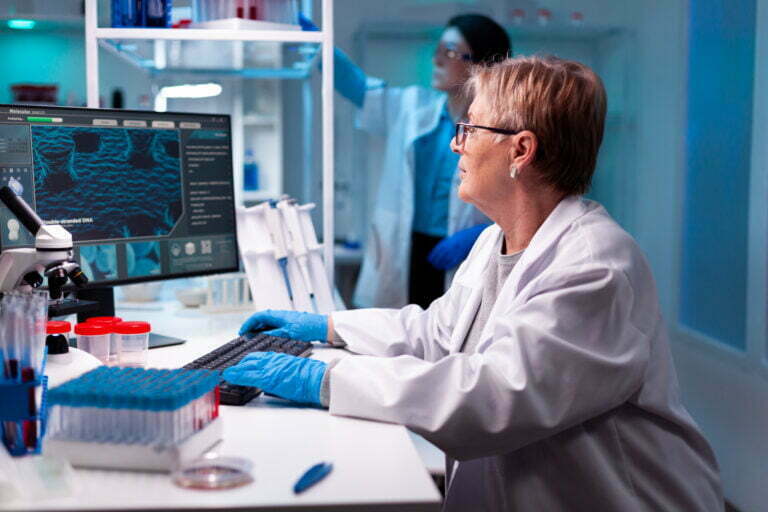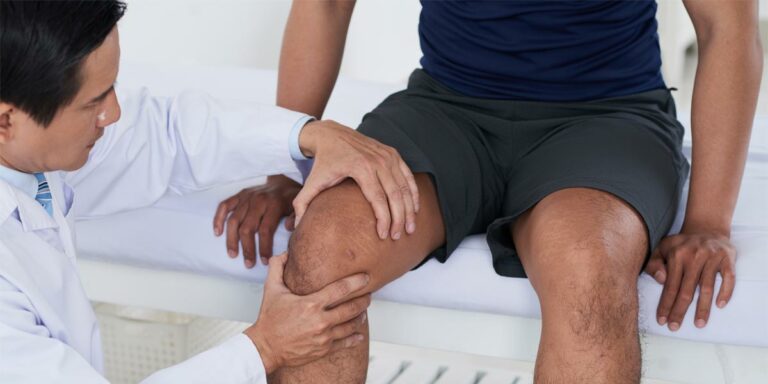Know about the risks and common causes of secondary hypertension. Learn the differences between primary and secondary hypertension and how to determine the underlying cause in a patient with hypertension, such as sleep apnea. Get a better understanding of what high blood pressure is and how to effectively manage it.
The difference between primary and secondary hypertension
Hypertension, commonly known as high blood pressure, is a chronic medical condition characterized by an elevated pressure in the arteries. Blood pressure is measured in millimeters of mercury (mm Hg) and is represented as two numbers, such as 120/80 mm Hg. The first number (systolic pressure) represents the pressure in the arteries when the heart beats, while the second number (diastolic pressure) represents the pressure in the arteries when the heart is at rest.
Hypertension is classified as primary or essential hypertension when the cause is unknown or idiopathic. This is the most common form of hypertension, accounting for 90-95% of cases. On the other hand, secondary hypertension is caused by a number of underlying conditions. It is important to identify the cause of secondary hypertension for effective treatment because the underlying condition must also be treated in order to control the hypertension. For example, if secondary hypertension is caused by kidney disease, treatment will focus not only on controlling blood pressure, but also on managing the kidney disease. Identifying the cause of secondary hypertension can also help in preventing the development of complications associated with hypertension such as heart disease, stroke and kidney failure.
Common causes of secondary hypertension
- Kidney disease: Hypertension can develop as a complication of kidney disease, such as polycystic kidney disease or chronic kidney disease. When the kidneys are damaged, they may produce an excess of renin, an enzyme that regulates blood pressure. This can cause the blood vessels to constrict and increase blood pressure.
- Sleep apnea: Sleep apnea is a condition characterized by repetitive episodes of interrupted breathing during sleep. It can cause a decrease in oxygen levels in the blood, which can lead to an increase in blood pressure. Obstructive sleep apnea (OSA) is a common cause of secondary hypertension in adults.
- Endocrine disorders: Endocrine disorders such as hyperthyroidism, hyperaldosteronism, and pheochromocytoma can cause an increase in blood pressure by affecting hormone levels in the body.
Risk factors for secondary hypertension
- Family history of hypertension: Having a family history of hypertension may increase the risk of developing secondary hypertension.
- Obesity: Obesity is a risk factor for secondary hypertension as it increases the risk of developing other underlying medical conditions.
The importance of early diagnosis and treatment of secondary hypertension
Early diagnosis and treatment of secondary hypertension are important in preventing complications. Hypertension is a chronic condition that can cause damage to the blood vessels over time. Identifying the condition or conditions that is/are causing the hypertension and treating it quickly can help significantly to control blood pressure and prevent complications. If left untreated, hypertension can lead to very serious health issues, such as:
- Cardiovascular disease: Hypertension can cause damage to the heart and blood vessels, increasing the risk of heart attack, stroke, and heart failure.
- Kidney damage: Hypertension can cause damage to the kidneys, leading to chronic kidney disease or kidney failure.
- Neurological damage: High blood pressure can cause damage to the blood vessels in the brain, increasing the risk of dementia and cognitive decline.
- Eye damage: Hypertensive retinopathy is caused by damage to the blood vessels in the eyes due to hypertension, it can lead to blindness.
Identifying the condition that is causing the hypertension and treating it quickly can help control blood pressure and prevent complications.
How Remote Patient Monitoring Works in Secondary Hypertension Management
Remote patient monitoring (RPM) uses technology such as smartphones, wearable devices, and home-based monitoring systems to track blood pressure and other symptoms in patients with hypertension. These devices can automatically transmit data to healthcare providers, who can then use the information to adjust treatment plans as needed.
RPM allows for more frequent monitoring of blood pressure and symptoms, which contributes to more timely adjustments to treatment plans. This can be particularly useful for patients with secondary hypertension, which is caused by underlying conditions that can cause rapid changes in blood pressure, so frequent monitoring is essential for effective management.
RPM can also improve patient engagement and adherence to treatment. By giving patients the ability to track their own blood pressure and symptoms, and to communicate easily with their healthcare provider, RPM helps increase patient understanding of their condition and reinforces the importance of taking medications and following lifestyle recommendations. The results are typically better adherence to treatment and more beneficial outcomes.
DrKumo’s Remote Patient Monitoring
DrKumo is a leading provider of secured remote patient monitoring technology solutions for the healthcare industry. Our state-of-the-art, HIPAA-compliant, mobile-enabled, continuous real-time monitoring, and AI/ML engine-powered solutions enable healthcare providers to remotely monitor the health conditions of their patients at home, while also providing patients with the ability to manage their health conditions in the comfort of their own homes.
DrKumo’s RPM technology provides healthcare providers with real-time intelligence for timely intervention, allowing for more efficient and effective care for patients. Our solutions are designed to be highly scalable, easy to use, and user-friendly, making it easy for both healthcare providers and patients to take advantage of the benefits of remote patient monitoring.
DrKumo understands the importance of keeping patient data secure, which is why we have made it our mission to improve cybersecurity in healthcare. Our solutions are specifically designed to protect against potential cyber threats, ensuring that patient data remains safe and secure at all times.
DrKumo’s culture is innovative, collaborative, and technology-driven, which allows us to provide the most effective solutions to both patients and healthcare providers. With our remote patient monitoring technology, we are revolutionizing the way people access quality healthcare across the world
Takeaways
Secondary hypertension, which is caused by an underlying condition can be more difficult to manage than primary hypertension, which has no known cause. This is because the underlying condition must be treated in addition to controlling blood pressure. On the other hand, with proper treatment and management, it is possible to control blood pressure and improve outcomes.
Remote patient monitoring (RPM) can be a valuable tool for controlling and managing secondary hypertension by providing healthcare providers with more frequent and accurate information about the patient’s condition. This can help quickly identify changes in blood pressure and symptoms that may indicate a need for adjustments to the treatment plan. One of the key benefits of RPM in secondary hypertension is that it allows for more frequent monitoring of blood pressure and symptoms, which contributes to more timely adjustments to treatment plans to meet the patient’s immediate needs.
RPM can also help improve patient engagement and adherence to treatment. By giving patients the ability to track their own blood pressure and symptoms and to communicate easily with their healthcare provider, RPM can increase patient understanding of their condition and the importance of taking medications and following lifestyle recommendations. to the result is often better adherence to treatment and more beneficial outcomes.
Interested to know more about how RPM can help you? Contact us today to find out more.








